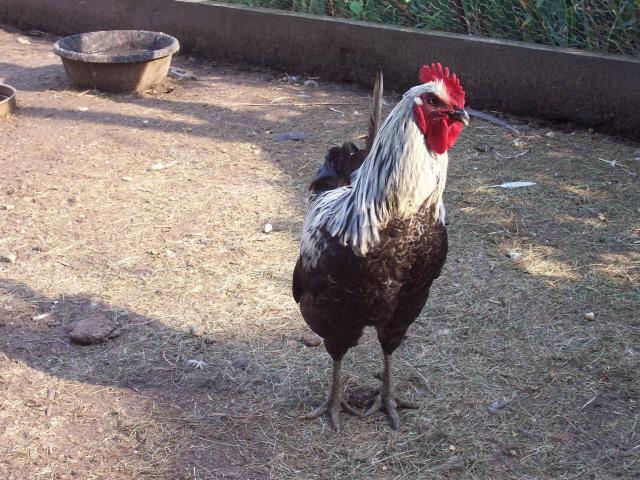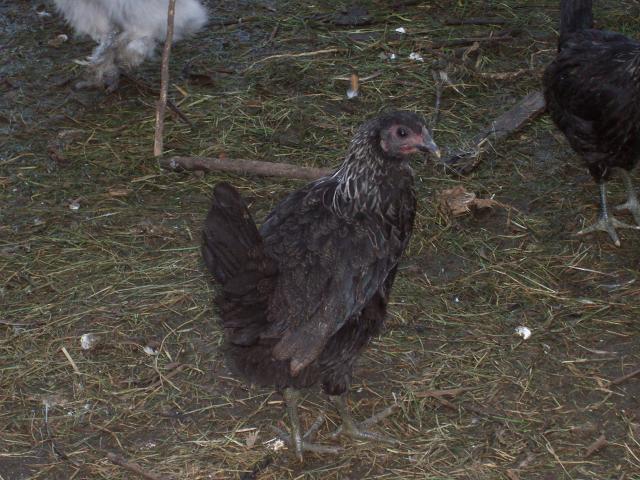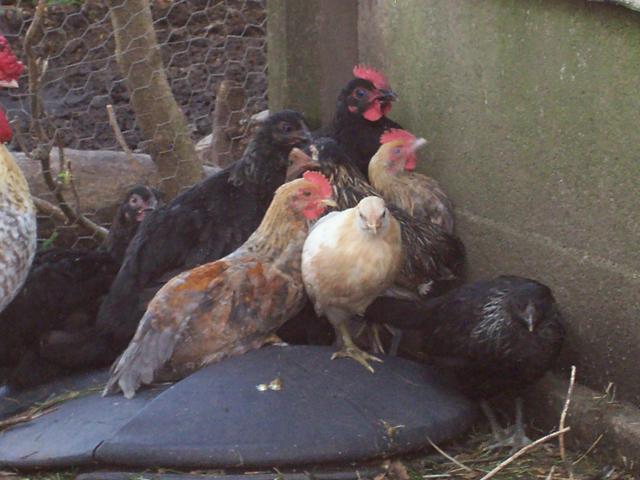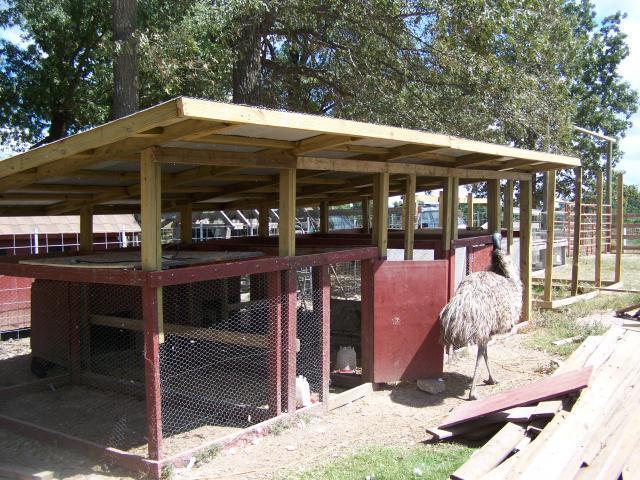These are pics of the other Iowa Blue. I dont have any pictures of the hens. I will try to get some tonight. The pics of the pullets resemble the hens. We are trying to breed the mossiness out of them. They are supposed to have a silver birchen color pattern. I dont know if a red was used in trying to fix the genetic diversity of them or not. Ive seen some with less mossiness. I have a pullet that is quite silver but when I locked everybody up in the breeding pen, I didnt see her.
Another view of my cockerel.
A pic of one of the pullets.
A picture of a few pullets along with some of my crosses out of my Blue Wheaten Cockerel and my crossbred hens.
From Sandhills catalog:
Iowa Blue: Gray penciled pattern, pale brown eggs, medium to moderately large single comb with six points. Please note that these are not a blue chicken. Developed near Decorah, Iowa in the early 1900's. The breed was in desperate need of new blood and I have been working for the past few years to introduce new blood. There is still a slight possibility of an off-type bird. Chick color will range from a warm cocoa brown to black to an occasional mottled one. This breed is a somewhat seasonal layer of pale brown eggs. They go in spurts. When not broody, we get lots of chicks and then all of a sudden they go broody and we get nothing. These are not recognized by the APA Standard. They do not have yellow legs. They make a nice breed for someone who wants a good forager which will set on eggs.
From
http://www.raising-chickens.org
These birds were developed around Decorah, Iowa in the first half of the 1900's. This bird is very rare and hasn't been recognized by the APA or ABA.
The almost folk like story of these birds is that a White Leghorn hen went broody and hid under a building to brood her chicks. When she finally came out she had a group of chicks that were unlike any chicks in the area. Some were colored chestnut, but others looked like pheasant chicks, with light yellow, horizontal stripes on their cheeks, and a triangle of yellow under their chins, with black stripes down their backs. Some of the old timers that are familiar with the breed would tell you that the breed was sired by a pheasant.
In the 1960's some hatcheries within Iowa carried the breed readily. As time passed, and these hatcheries went out of business the breed was almost lost. Ken Whealy, of a Decorah based non-profit organization that was dedicated to the preservation of heirloom plants, discovered a few struggling flocks of these birds in the 1980's. Since then he has been trying to distribute birds to any interested parties in an effort to restore the breed.
The breed is a dual purpose bird and is known as a good forager. Hens lay light brown eggs and as the story suggests, they do tend to go broody. When the Blue roosters are used in cross-breeding they produce sex-linked chicks, such as gray cockerels and black pullets when crossed with a White Plymouth Rock hen, or a reddish gray cockerel and blackish gray pullet when crossed with a New Hampshire.





